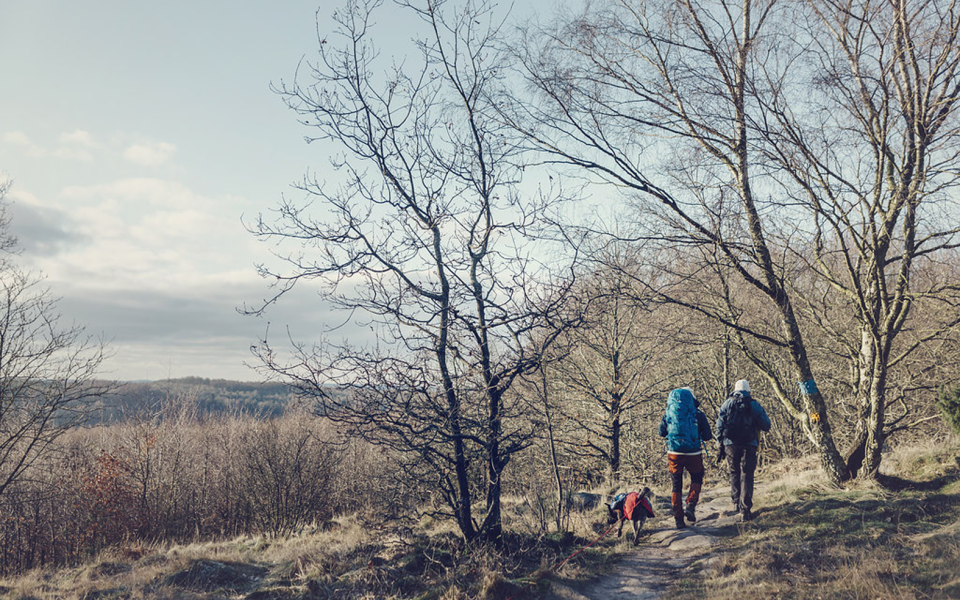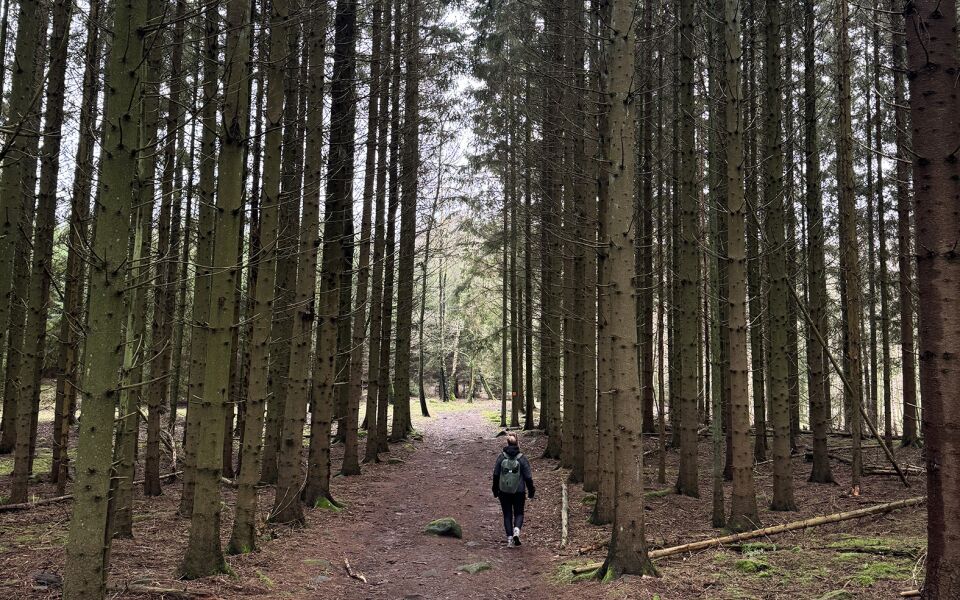14 Väderkullen - Häckeberga
-
Length
8 km
-
Degree of difficulty
Red
Well-worn paths criss-cross the steep terrain over the crest and along the slopes of the Romeleåsen ridge in west central Skåne. The geological collision that created the ridge also created a comfortable grotto for the giant Finn. Travel back in time – you can feel the centuries in the landscape.
Nature
The Romeleåsen Ridge is a horst, the result of a collision between the tectonic plates of Europe and Africa some 150 million years ago. At the same time, the southwestern corner of Skåne dropped significantly. From the crest and with a little determination you can zig-zag your way upward until you reach Romeleklint Cliff, 175 metres above sea level and the second highest point of the ridge. At nearby Järnhatten, the bedrock is exposed – bedrock which is otherwise found at a level 2,000 metres lower, beneath the layers of soil on the Lundaslätten Plain.
You pass through an area with gnarled beech trees, straggly hazel bushes and dead tree trunks, some lying and some still standing. It is the process of decay itself that gives this woodland status as a key habitat. The rotting wood is inhabited by a diversity of lichens, mosses and insects. The area is the remains of ancient outlying grazed woodlands.
At Allmänningen there is an extensive grazed pasture where you find lady's bedstraw and field wormwood. You will also see wild thyme, and if you brush against it or gently rub its leaves, you will also feel the elegant fragrance.
Cultural History
When you hike the trails of Romeleåsen Ridge, the city of Lund with its impressive cathedral is not far away. This was true even in the days when pagan beliefs persisted despite the sweeping introduction of Christianity. For instance, legend has it that a giant named Finn and his family lived in a large cave deep under the ridge, and that he was hired to do the heavy lifting when Lund Cathedral was built in the very early 1100s.
The landscape of Skåne has changed greatly since then, from the extensive forest cover of the 1500s to the deforestation and soil depletion of the 1700s and 1800s. Romeleåsen Ridge is a clear example of this trend, with the beech forests decimated and turned into well-used grazing areas, and then to a barren heath where the animals had only young heather and juniper to munch on. Replanting began in the 1880s.
Carl von Linné, the father of modern taxonomy and whose classification system for plants and animals is still in use today, climbed the ridge to Romeleklint Cliff during his travels through Skåne in 1749. At that time, the forest was already so depleted that from this high point, he stood and counted the church towers. Today there is far more forest, but the view is still impressive.
Around Häckeberga there are several ancient, restored pastures and you can see how the ridge looked one hundred years ago. Remains of crofts and farms can be found here and there, all once belonging to the Häckeberga Estate. In the middle 1800s, there were almost 150 tenant farms and crofts in the area. Today only fifty remain. Beside the campsite at Allmänningen, you can find the ruin of a large farm, where there was once a farmhouse, a barn, a stable with a room for the farmhand, and a small pig sty. Another well-preserved croft from the 1800s is Kullatorpet, beside the trail. Open to the public some weekends and holidays, it can also be rented. But prepare for a rustic experience. This is life on the ridge as it was 100 years ago, with only kerosene lamps and wood stoves for comfort.
8 km
About Difficulty Grading
The grading is tailored for Swedish lowland trails that adhere to the quality criteria established by the national framework for hiking trails.
Even and firm ground: The terrain is generally flat. The hike requires no need to use your hands for support. No obstacles. Bridges are always present when crossing waterways.
Uneven and/or soft ground: Some changes in elevation. Certain sections may require hand support to maintain balance. There may be obstacles such as low stiles and short stairs. Minor obstacles like stones and roots. Boardwalks are present.
Loose or slippery ground combined with steep sections: Technical parts require hand support. There may be obstacles such as high stiles and longer stairs. Frequent sections with stones and/or roots. Boardwalks with deeper surrounding water.
Note: One or more of these features may be present along the trail section.
Red
2-3 timmar
- Skog
- Storslagna vyer
- 7-15 km
- Utmanande
- Skåneleden
Highlights along the section
Are you looking for a place to stay or a cozy cafe during your hike? Here are some of the sights and places to visit along the section.
Hiking suggestions
Do you find it difficult to know where to start your hike? Here is some inspiration and a selection of recommended hikes - short and long, with or without accommodation or based on different themes.
Show allNews
Here you will find information about what's new on the trail as well as current redirections and disturbances.
Continue on the trail
Previous section
Next section
Share your moments
Share your adventures on the trail by tagging your photos with #skåneleden or #skaneleden.






